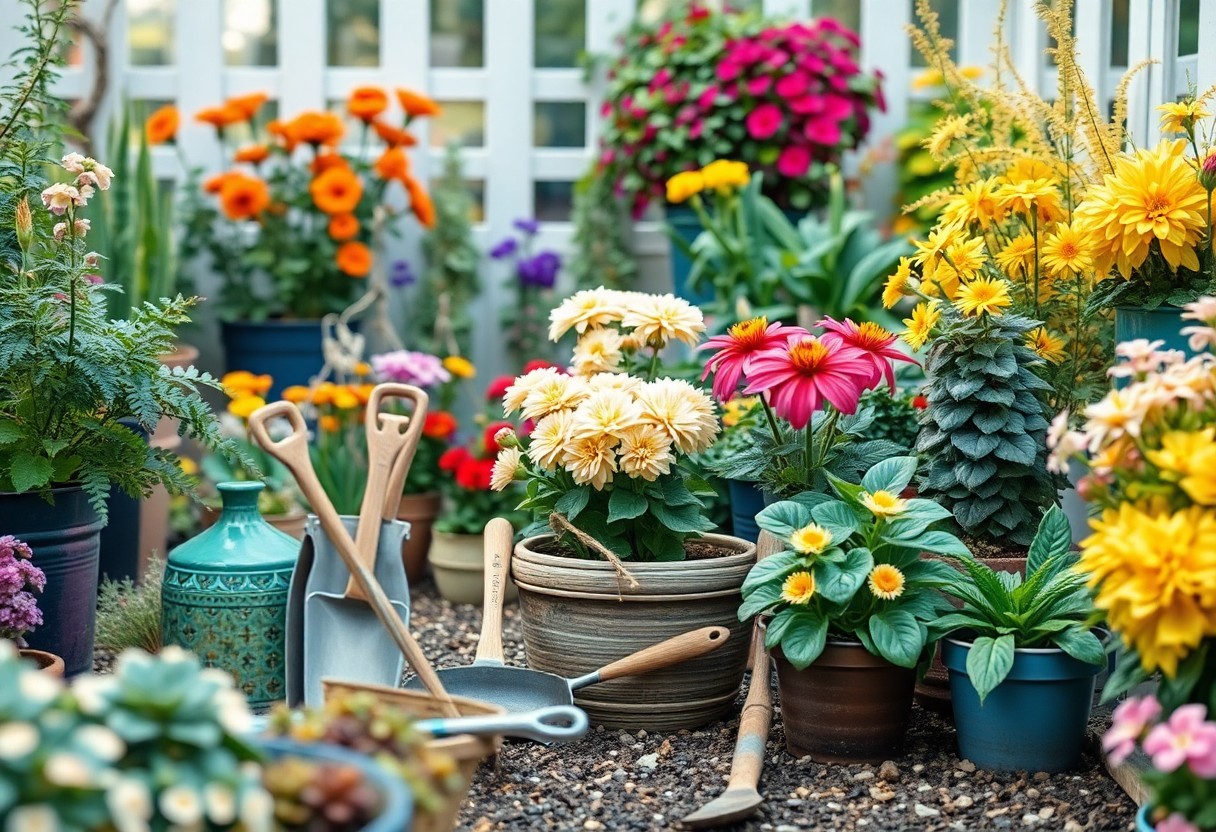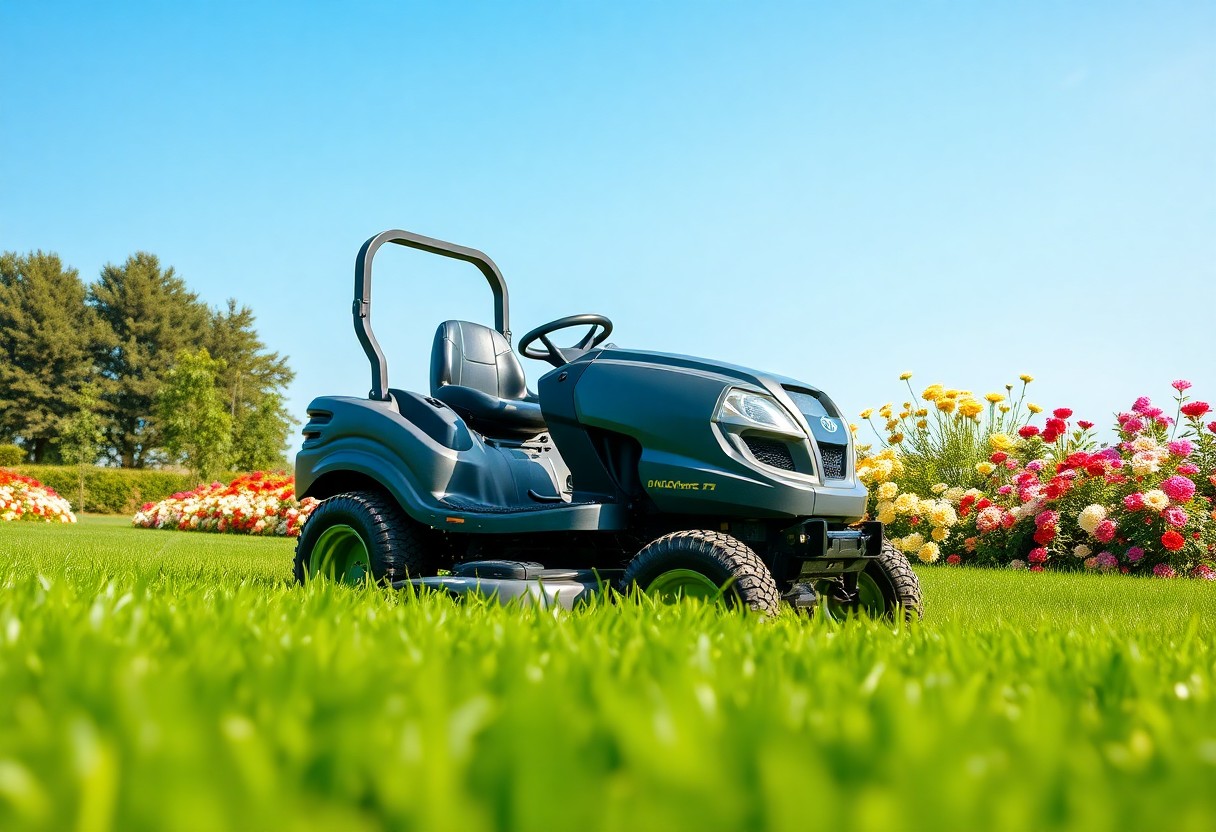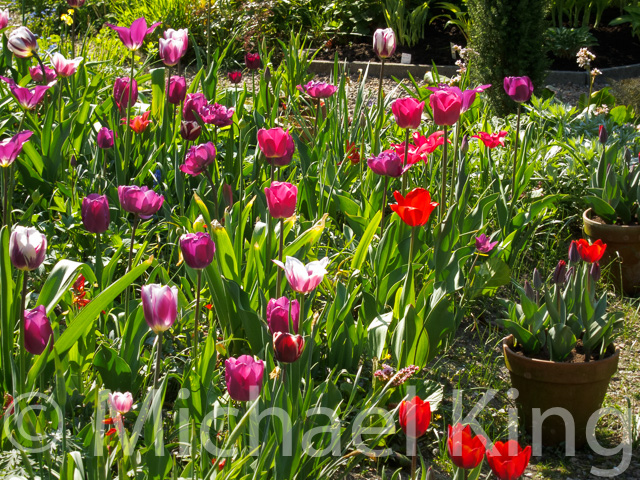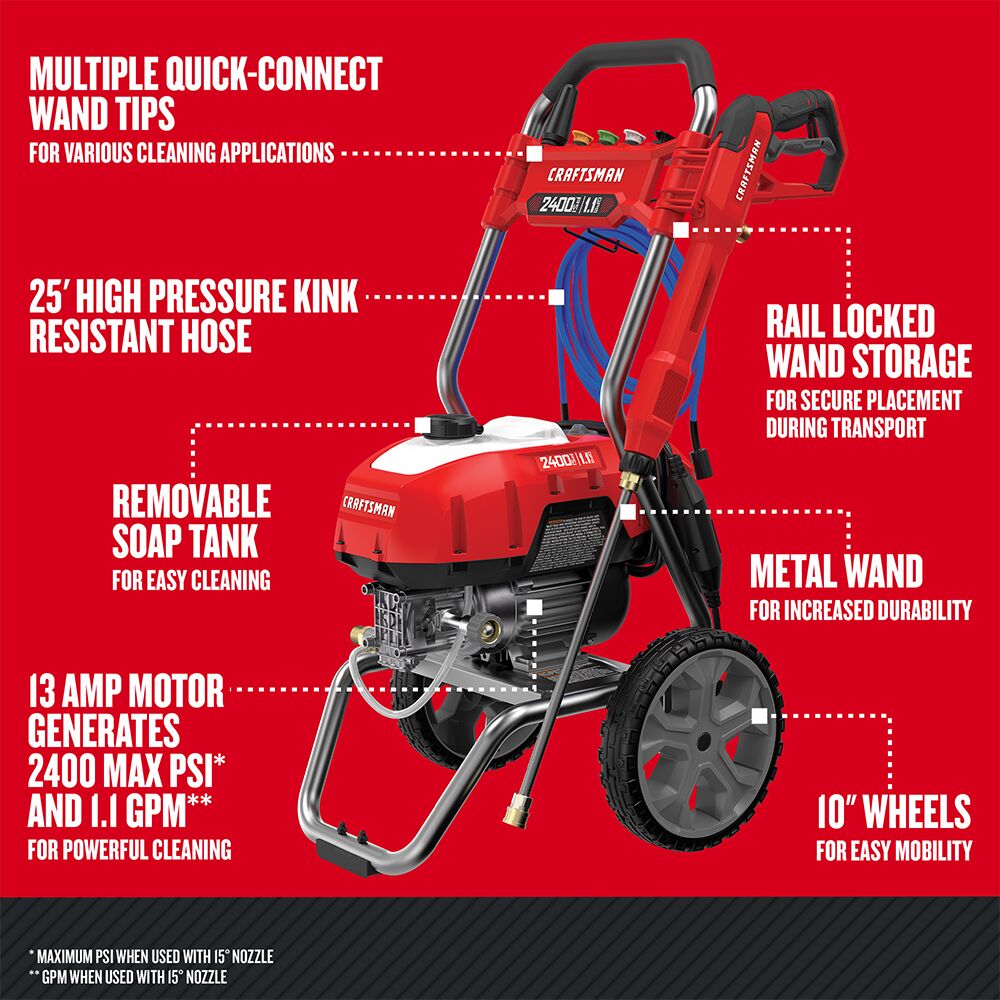
Many gardeners find joy in transforming their outdoor spaces with the changing seasons. By exploring seasonal gardening trends, you can keep your garden vibrant and productive throughout the year. This guide will help you embrace the unique challenges and delights of each season, allowing you to adapt your gardening practices to suit your climate and personal preferences. From selecting the right plants to implementing seasonal techniques, you’ll discover how to create a thriving garden that reflects the beauty of every season.
Embracing Seasonal Colors
Your garden can become a vibrant canvas that reflects the unique colors of each season. By carefully selecting blooms and foliage that represent the essence of spring, summer, autumn, and winter, you can create a stunning visual display throughout the year. Adding seasonal colors not only enhances your space but also uplifts your spirit as you immerse yourself in nature’s palette. Get ready to embrace the changing hues that transform your garden from one season to the next!
Spring Blooms
At the arrival of spring, your garden bursts forth with life, showcasing a delightful array of colors. Tulips, daffodils, and cherry blossoms paint the landscape in bright pastels and vibrant hues, signaling warmer days ahead. As every flower unfurls, you can bask in the joy of nature’s renewal and the promise of new beginnings.
Summer Vibes
Summer brings an explosion of color and vibrancy to your garden, making it the perfect season to showcase bold and bright flowers. With sunflowers, zinnias, and dahlias in full bloom, your outdoor space becomes alive with warmth and energy. This is the time to let your creativity shine, mixing colors and textures that reflect the joyous spirit of summer.
With longer days and plenty of sunlight, your summer garden invites you to experiment with vivid flower arrangements and lush greenery. Consider incorporating fragrant herbs like basil or mint alongside eye-catching blooms to add both color and sensory delight. Don’t shy away from experimenting with playful plants, like butterfly bushes or vibrant petunias, which will draw pollinators and keep your garden buzzing with life. Enjoy the sunshine and immerse yourself in the beauty of summer vibes that fill your outdoor space with warmth and happiness!
Gardening Techniques for Every Season
Assuming you’re looking to make the most of your garden throughout the year, it’s vital to adapt your techniques to match the changing seasons. Each season brings its unique challenges and opportunities, whether it’s planting in the spring, tending in the summer, preparing in the fall, or protecting in the winter. By employing the right strategies, you can create a thriving garden that flourishes no matter the time of year.
Fall Preparation
Between the warm days of early autumn and the first frost, you have a great opportunity to prepare your garden for winter. Start by clearing away any spent plants and debris, which can harbor pests and diseases. This is also the perfect time to enrich your soil with compost and mulch, ensuring your garden gets the nutrients it needs for a vibrant spring comeback.
Winter Maintenance
Above all, winter maintenance is about protecting your garden assets from harsh conditions. This involves covering sensitive plants with mulch or protective cloth, watering existing plants on milder days, and regularly checking for any signs of damage from frost or snow. By being proactive, you can ensure your garden emerges healthy when spring arrives.
Hence, engaging in winter maintenance can significantly impact the health of your garden come spring. Utilize mulch to insulate your soil and reduce temperature fluctuations while keeping roots protected. Regularly water your plants when temperatures rise above freezing to prevent dehydration. Additionally, pruning certain perennials and inspecting for pests will prepare your garden for the warmer months ahead. Taking these steps will help ensure that your garden not only survives the winter but thrives when spring blooms into view.
Choosing the Right Plants
Any gardener knows that selecting the right plants is crucial for a thriving garden. You’ll want to consider your local climate, soil type, and how much sunlight your garden gets. With a little research, you can create a beautiful garden that not only thrives in your environment but also enhances your outdoor space throughout the seasons.
Perennials vs. Annuals
About perennials and annuals, it can be exciting to explore both options. Perennials return year after year, providing long-lasting beauty and reducing the need for replanting. In contrast, annuals offer vibrant blooms for just one season, allowing you to refresh your garden every year with new colors and varieties.
Native Plants for Your Zone
Among the most sustainable choices for your garden are native plants, which are perfectly adapted to your local environment. They require less water and maintenance, making them ideal for busy gardeners. Plus, these plants support local wildlife, including beneficial pollinators, contributing to a healthier ecosystem in your area.
Due to their natural adaptation to local conditions, native plants often flourish with minimal intervention, which means you can spend more time enjoying your garden rather than maintaining it. They provide a sense of place and help preserve the ecological balance, making your garden both beautiful and environmentally friendly. By choosing native plants, you are nurturing your garden while taking care of your local environment.
Seasonal Tools and Equipment
Many gardeners overlook the importance of seasonal tools and equipment, but having the right gear can make all the difference in your gardening experience. As the seasons change, so do your gardening needs, and being prepared with the right tools will help you adapt and thrive year-round. This ensures you can meet the demands of each season without unnecessary stress.
Essential Gear for Each Season
With every change of season comes a new set of necessary gardening gear you should have on hand. In spring, you’ll want seed trays and hand trowels, while summer may call for pruning shears and watering cans. As autumn takes hold, you’ll benefit from rakes and leaf bags, and winter preparation might include mulch and frost protection to shield your plants.
Eco-Friendly Tools
For eco-conscious gardeners, choosing eco-friendly tools is a great way to contribute to your garden’s health and the planet. Opting for biodegradable materials and sustainable manufacturing practices can change how you approach your gardening routine.
Another advantage of eco-friendly tools is their durability and efficiency. Many of these tools are designed to reduce waste, often incorporating materials like recycled plastics or sustainably sourced wood. By investing in such tools, you not only enhance your gardening experience but also align your gardening practices with a healthier environment. Plus, you’ll feel good knowing you’re making responsible choices while caring for your garden!
Adapting Your Gardening Schedule
Once again, adapting your gardening schedule is key to enjoying a thriving, diverse garden throughout the year. Consider the climate of your region, the seasonal changes, and the specific needs of your plants. By planning ahead and adjusting your gardening tasks based on the seasons, you’ll ensure that your garden stays vibrant and productive no matter the time of year. You’ll be able to enjoy planting, harvesting, and nurturing your green space every season.
Seasonal Planting Calendar
Planting at the right time for your climate zone is necessary for maximizing your garden’s potential. Research the best planting times for various seeds and plants throughout the year. Typically, spring is the prime time for annuals, while fall allows for planting perennials and bulbs to ensure a stunning display come spring. Stay organized by creating a calendar that schedules your planting and harvesting times to help keep your garden thriving.
Tips for Year-Round Growth
Planting for year-round growth means considering factors such as crop rotation, companion planting, and utilizing greenhouses or cold frames. Here are some tips to help your garden flourish throughout the seasons:
- Choose plants that have overlapping growing seasons.
- Integrate perennial crops into your garden.
- Use mulch to protect roots and retain moisture.
- Adjust watering and fertilizing based on seasonal needs.
Assume that with careful planning and attention, your garden will not only survive but thrive, producing a continuous array of colors and flavors.
Plus, consider season extenders like row covers, cloches, or greenhouses to give your plants a longer growing period. Here are some more strategies you can employ:
- Take advantage of raised beds for better soil control.
- Incorporate plants that thrive in shade areas for better space utilization.
- Regularly monitor for pests and diseases to maintain health.
Assume that by implementing these tips, you will create a garden that provides beauty and bounty all year long!
Creating a Seasonal Design
Despite the challenges of gardening throughout the seasons, you can create a vibrant landscape that thrives year-round. By Exploring the Possibilities of Year-Round Gardening in a Ceres Greenhouse, you can discover the most effective ways to adapt your garden’s design to changing weather, allowing you to enjoy a continuous flow of beauty and bounty throughout the year.
Garden Layout Ideas
Garden layouts are necessary to maximizing the potential of your space. You can create designated areas for seasonal plants while incorporating pathways that encourage exploration. By planning your layout carefully with zones for both sun-loving and shade-tolerant plants, you can enjoy a flourishing garden no matter the season.
Incorporating Hardscaping
At the heart of a seasonal design is hardscaping, which provides structure and visual interest throughout the year. Incorporating elements like patios, walkways, and retaining walls not only enhances your garden’s aesthetics but also offers functional areas for gatherings and relaxation.
Due to the durability of hardscaping materials, you can count on these features to withstand changing weather while creating spaces that integrate seamlessly with your garden’s seasonal palette. Using natural stone or stamped concrete can add texture and warmth, making your garden a welcoming retreat any time of year.
Summing up
So, as you embrace seasonal gardening trends, you have the opportunity to adapt your garden year-round, bringing beauty and fresh growth into every season. By selecting the right plants, planning ahead, and getting creative with your space, you can enjoy a vibrant garden that evolves with each passing month. Embrace the joy of gardening and let your personal style shine through while nurturing the environment around you. Happy gardening!







